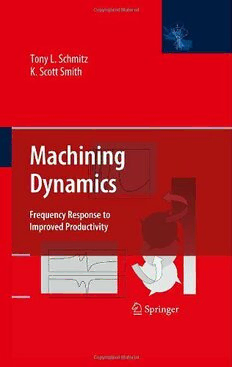
Machining Dynamics: Frequency Response to Improved Productivity PDF
310 Pages·2009·9.701 MB·English
Most books are stored in the elastic cloud where traffic is expensive. For this reason, we have a limit on daily download.
Preview Machining Dynamics: Frequency Response to Improved Productivity
Description:
Machining Dynamics: From frequency response to improved productivity will train engineers and students in the practical application of machining dynamics, with a particular focus on milling. The book is arranged such that the steps required to improve machining productivity through chatter avoidance and reduced surface location error (forced vibrations resulting in part geometric errors) are clearly evident. The following topics are covered in detail: modal analysis, including experimental methods, to obtain the tool point frequency response function; descriptions of turning and milling, including force modeling, time domain simulation, stability lobe diagram algorithms, and surface location error calculation for milling; and receptance coupling methods for tool point frequency response prediction, including beam theory.Readers will find: clear descriptions of predictive algorithms for machining process performancecomprehensive coverage of the fundamentals of machining dynamics numerous numerical examplesfunctional MATLAB® code for process predictions.Machining dynamics: From frequency response to improved productivity will serve as a valuable resource for practicing manufacturing engineers and graduate students interested in learning how to improve machining productivity through consideration of the process dynamics.
See more
The list of books you might like
Most books are stored in the elastic cloud where traffic is expensive. For this reason, we have a limit on daily download.
